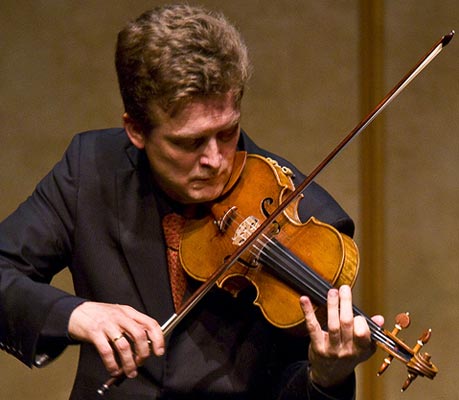Christian Tetzlaff
At the Lobero Theatre, Tuesday, December 2.

Even apart from the sheer magnificence and calm profundity of Christian Tetzlaff’s encounter with Bach last week at the Lobero, his stage presence was perhaps the most striking of any musical performer to play in Santa Barbara this year. There stood the famed German violinist, alone in the middle of an empty stage, exploring and exposing the music of a single great composer – J. S. Bach – through his towering sonatas and partitas for solo violin. Tetzlaff played four of the six works in the canon in the course of two full hours, and built an impression of this music as a complete and self-contained world, demonstrating not only bold technical virtuosity, but also that rarer and more valuable commodity, emotional depth.
Was it serendipity or a coordinated effort between UCSB Arts & Lectures and CAMA to present Lynn Harrell’s Bach Cello Suites performance at Hahn Hall and Tetzlaff’s Lobero triumph within a few weeks of each other? Whatever the case, hearing these great solo opuses-both written in 1720 and popularized much later-in close proximity has made this season a veritable embarrassment of Bach-ian riches.
Tetzlaff brings a definitive touch to this music. His approach to each distinct movement was at once unwavering in execution and subtle in nuance. Reflective passages were played with a dream-like airy dignity, and were interspersed with perky dance movements, yet still infused with Bach’s fierce invention and intelligence. The best-known movement is the long “Chaconne” from the Partita in D Minor. Tetzlaff’s performance of that classic was the finest I have ever heard, and that great calm moment when the score dips into D major, like a sudden clear view of a meadow amid a storm, yielded the proper epiphany.
Other high points of the recital came with the dazzling, multi-voiced “Fugue” from Sonata No. 3 in C, and the classic “Preludio” in the Partita No. 3 in E. Initially a bright, brisk major mode foray, the “Preludio” navigates a breathless tour de force of changing spirits, moods, and modes. The evening ended on another up note, with that jig (Gigue) in E major in which even the very last phrase was equipped with expressive shading. Tetzlaff is a heroic and tender steward of this landmark in Western music. We were lucky to have experienced this aspect of his life’s work, up very close and very personal.



